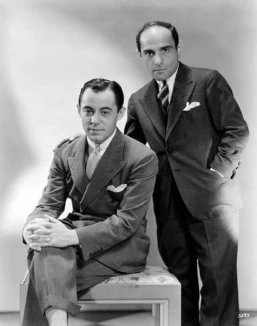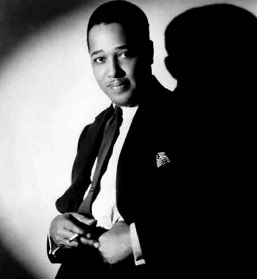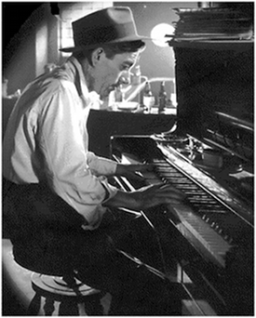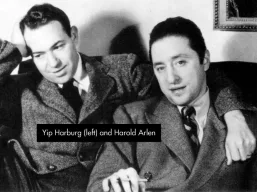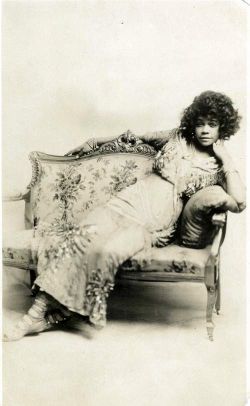1924 selected standards
________________________________
Everybody Loves My Baby (m. Spencer Williams, w. Jack Palmer)
It Had to Be You (Isham Jones, Gus Kahn)
Tea for Two (m. Vincent Youmans, w. Irving Caesar)
I Want to Be Happy (m. Vincent Youmans, w. Otto Harbach, Irving Caesar)
California Here I Come (B. G. “Buddy DeSylva, Joseph Meyer, Al Jolson)
C. C. Rider (Ma Rainey)
What’ll I Do? (Irving Berlin)
Alabamy Bound (m. Ray Henderson, w. Buddy DeSylva and Bud Green)
See also the feature page George and Ira Gershwin: selected songs, 1919-1927. Gershwin standards published in 1924 include:
- Oh, Lady Be Good
- Fascinating Rhythm
- The Man I Love
____________________________
Everybody Loves My Baby (m. Spencer Williams, w. Jack Palmer)
- Everybody Loves My Baby — separate feature page
_______________________
It Had to Be You (Isham Jones, Gus Kahn)
Isham Jones (January 31, 1894 – October 19, 1956) was a bandleader, saxophonist, bassist and songwriter. Jones was born in Coalton, Ohio, to a musical and mining family, and grew up in Saginaw, Michigan, where he started his first band. In 1915 he moved to Chicago, Illinois, which remained his home base until 1932, when he reestablished himself in New York City. Jones also toured England with his orchestra in 1923.
The Isham Jones band made a series of popular gramophone records for Brunswick throughout the 1920s. He led one of the most popular dance bands in the 1920s and 1930s. His first successful recording, Wabash Blues written by Dave Ringle and Fred Meinken, was recorded in 1921 by Isham Jones and his Orchestra. – adapted from wikipedia
Marion Harris – recorded 8 March 1924, according to the video provider
.
The California Ramblers – recorded 18 April 1924, according to the (defunct) site The Red Hot Jazz Archive — The band recorded it again a week later as The Golden Gate Orchestra.
___________________
Judy Garland – An episode of The Pepsodent Show Starring Bob Hope which aired March 7, 1939.
.
Frank Sinatra – 1979
_____________________
Tea for Two (m. Vincent Youmans, w. Irving Caesar) was introduced by Louise Groody and John Barker in the Broadway musical, No, No, Nanette, which opened on September 16, 1925, at the Globe Theater and ran for 321 performances. -jazzstandards.com
It took two and a half years for the musical to go from Detroit to Broadway openings, including a year (or more) in Chicago, according to one source cited by jazzstandards here: No, No, Nanette.
In the wikipedia “Year in Music” series Tea for Two is listed under 1925 because the play opened on Broadway in that year. However, the song was recorded more than a year earlier by Helen Clark and Lewis James. I Want to Be Happy, from the same show, was also recorded in August 1924.
According to Irving Caesar, the words of the published song were originally “dummy” lyrics, meant to be replaced at a later date. Using dummy lyrics is a common practice among lyricists as a way to save an idea when the right words haven’t come yet. It allows the song to be sung rather than merely hummed during construction.
In The Poets of Tin Pan Alley Philip Furia relates how the lyrics for “Tea for Two” came to be written: “One night in 1924, so the story goes, composer Vincent Youmans came up with a melody so enthralling he got his lyricist, Irving Caesar, out of bed and begged him to put words to it. To placate Youmans (and to get back to sleep) Caesar quickly tossed off a “dummy lyric,” promising to write the real one in the morning. But the next morning Caesar and Youmans looked at the dummy lyric again and decided to keep it, even though the title phrase was never repeated – a clear violation of the Alley’s axiom that “a good lyric” was “one that states the title promptly and then keeps stating it so that the public will remember it when shopping for records and sheet music.” Initially, Caesar wasn’t thrilled with his dummy lyric, telling Youmans “It stinks,” but Youmans liked it so much that he refused to allow Caesar to change a word of it. “Tea for Two” did become one of the most popular songs of the 1920s, but Zinsser seems to agree with Caesar, suggesting that the song’s success occurred in spite of its lyrics. He writes, “‘Tea for Two’ is a triumph of music over words that are little short of hilarious. Irving Caesar, who claimed that the lyric took him only five minutes, died in 1996 at the age of 101 and was quoted in his obituary as saying, ‘Sometimes I write lousy, but always fast.’” – from a WICN.org song of the week article (since removed)
From Wikipedia, adapted:
“Tea for Two” became a jazz standard and was recorded by numerous bands and instrumentalists. One famous interpretation of the song is Tommy Dorsey’s cha-cha-cha version, top ten in 1958, re-popularized in 2005 by adverts for McVitie’s biscuits. Another notable recording was made by Art Tatum in 1939. Ella Fitzgerald recorded this song with Count Basie on the 1963 Verve release Ella and Basie with arrangements by Quincy Jones.
Helen Clark and Lewis James – recorded August 1924
.
Marion Harris – 1925
.
The Benson Orchestra of Chicago – 1925
.
Art Tatum – 1933
.
Django Reinhardt – solo recorded in Paris 21 December 1937
.
_______________
I Want to Be Happy (m. Vincent Youmans, w. Otto Harbach, Irving Caesar) – from the musical No, No, Nanette, which opened on Broadway September 26, 1925
Helen Clark and Lewis James – recorded August 1924 according to the video provider. The slide show features only a few photos, but they include one of each of the singers.
.
Ella Fitzgerald with Chick Webb – 1937
______________________
 California Here I Come (B. G. “Buddy DeSylva, Joseph Meyer, Al Jolson) is often called the unofficial state song of California. In the 1934 W. C. Fields film It’s a Gift a record of the song is shown on-screen and the Victrola needle is put down to play it. The recording then plays over the next scene, showing the Bisonette family packing for their trip to the west coast.
California Here I Come (B. G. “Buddy DeSylva, Joseph Meyer, Al Jolson) is often called the unofficial state song of California. In the 1934 W. C. Fields film It’s a Gift a record of the song is shown on-screen and the Victrola needle is put down to play it. The recording then plays over the next scene, showing the Bisonette family packing for their trip to the west coast.
Some other notable appearances in popular culture.
Casa Loma Stomp recorded by Fletcher Henderson is a set of jazz variations on the song, whose tune is clearly audible in the first few verses and gradually disappears under the increasing complexity of the variations.
Ray Charles recorded a cover of this song, which appears in his 1960 album The Genius Hits the Road.
The song is used as the theme song for the California historical travelogue series on PBS, California’s Gold, hosted by Huell Howser. – wikipedia excerpts from the main article on the song
Al Jolson – 1924
.
Paul Whiteman and his Orchestra – c. 1924
.
Festfolket (later to become ABBA) – 1970
________________________
C. C. Rider (Ma Rainey) also known as See See Rider, and Easy Rider is a popular 12-bar blues song. It was first recorded by Gertrude “Ma” Rainey in 1924, and since then has been recorded by many other artists.
The song uses mostly traditional blues lyrics to tell the story of an unfaithful lover, commonly called easy riders: “See See rider, see what you have done”, making a play on the word see and the sound of easy.
The song is likely to be traditional in origin. Ma Rainey’s version became popular during 1925, as “See See Rider Blues.” It became one of the most famous of all blues songs, with well over 100 versions. It was recorded by Big Bill Broonzy, Mississippi John Hurt, Lead Belly, Lightnin’ Hopkins, Peggy Lee, and many others. – wikipedia
Ma Rainey – 15 October 1924 – the band: Louis Armstrong (cornet), Buster Bailey (clarinet), Charlie Green (tuba), Fletcher Henderson (piano), Charlie Dixon (banjo)
.
Big Bill Broonzy – date unknown
___________________
What’ll I Do? (Irving Berlin)
Paul Whiteman & his Orchestra – c.1923
.
Harry Nilsson – ninth track on the album A Little Touch of Schmilsson in the Night – 1973
________________

Alabamy Bound (m. Ray Henderson, w. Buddy DeSylva, Bud Green)
Fletcher Henderson and his Orchestra – 1925
.
Sam Wooding and his Orchestra – 1925
.
Les Paul and Mary Ford on their Les Paul and Mary Ford at Home show c.1953. A brief rendition of Darktown Strutter’s Ball follows.
________________
















